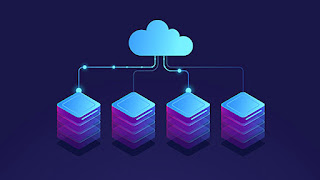What is Cloud Disaster Recovery(CDR)? What Makes It Worth?
CDR, or cloud disaster recovery has been increasing in popularity for good reason; it provides an easy and efficient way to have a backup plan in case of natural disaster or system failure. But what are the features of CDR that make it so appealing? And how can you be sure your chosen provider is right for you? In this post, we'll take a look at some of the key benefits of CDR and outline what to look for when selecting a provider. So read on to learn more about this important technology!
What is
Cloud Disaster Recovery?
- Offsite data storage: Data is stored in a secure offsite location so that it can be accessed in the event of a disaster.
- Backup and recovery: CDR services provide both backup and recovery capabilities, so that data and applications can be restored in the event of a disaster.
- Scalability: CDR services are scalable, so that they can be used to protect data and applications of all sizes.
- Flexibility: CDR services are flexible, so that they can be customized to meet the specific needs of each organization.
What Makes Cloud Disaster Recovery Worth It?
There are many benefits of using cloud disaster recovery, but some of the most important include:
- Cost savings: CDR can help to save money on IT costs by reducing or eliminating the need for on-site backup and recovery infrastructure.
- Increased efficiency: CDR can help to increase the efficiency of backup and recovery processes, by automating many of the tasks involved.
- Improved security: CDR can help to improve the security of data and applications by storing them in a secure offsite location.
- Increased availability: CDR can help to increase the availability of data and applications by providing an alternate recovery site in the event of a disaster.
How to Choose a Cloud Disaster Recovery Provider?
When choosing a cloud disaster recovery provider, there are a few things to keep in mind.
1. Make sure that the provider offers a service that meets your specific needs.
2. Compare the features and pricing of different providers.
3. Choose a provider that offers good customer support.
4. Make sure that the provider has a good reputation.
Now that you know more about cloud disaster recovery, it's time to start looking for a provider! Just remember to keep the above tips in mind, and you'll be sure to find a great service that meets your needs.
Conclusion
Cloud disaster recovery is a great way to protect your data and applications from system failures or natural disasters. It offers many benefits, including cost savings, increased efficiency, improved security, and increased availability. When choosing a provider, make sure to keep your specific needs in mind and compare the features and pricing of different providers. Also, be sure to choose a provider that offers good customer support and has a good reputation.
FAQs
1. What is cloud disaster recovery?
Cloud disaster recovery is a cloud-based service that provides backup and recovery for data and applications in the event of a system failure or natural disaster.
2. What are some of the key benefits of cloud disaster recovery?
Some of the
key benefits of cloud disaster recovery include cost savings, increased
efficiency, improved security, and increased availability.



Comments
Post a Comment